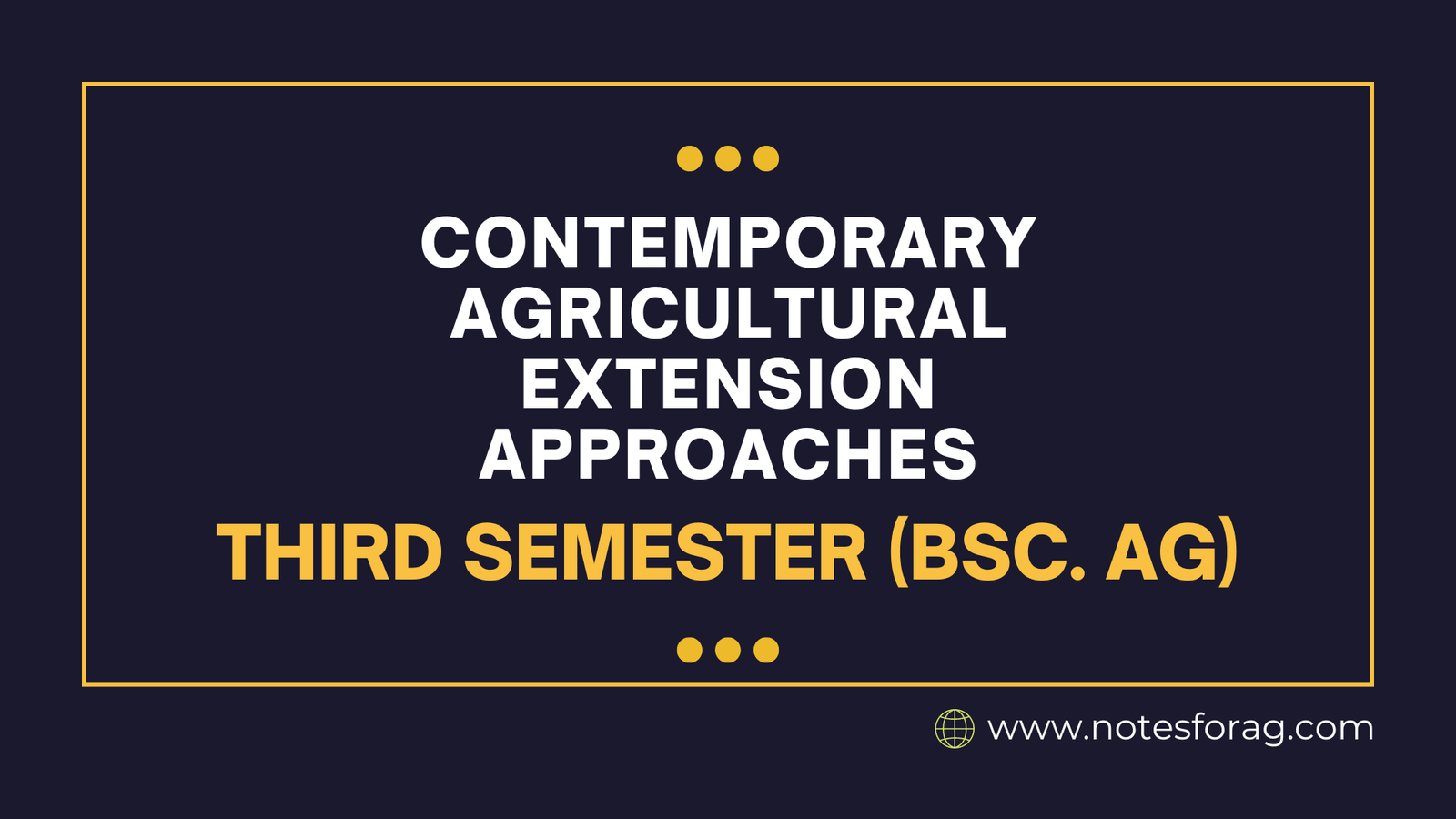Contemporary agricultural extension approaches place a premium on participatory, demand-driven, and holistic methodologies. These techniques promote farmer participation in decision-making by leveraging modern technology such as digital platforms, mobile applications, and GIS to improve information dissemination and advisory services. Sustainable agricultural methods, climate resilience, market access, and value chain development are prioritized in order to fulfill farmers’ individual demands and concerns. Collaboration with a variety of stakeholders, including as NGOs, the corporate sector, and international development partners, is essential for providing effective and efficient extension services.
Table of Contents
Introduction to Agricultural Extension
Agricultural extension approaches serve an important role in sharing knowledge and innovations to farmers, increasing farm productivity, improving rural livelihoods, and encouraging sustainable agricultural practices. Traditionally, agricultural extension relied on in-person interactions between extension workers and farmers, such as farm visits, field demonstrations, and group meetings. These technologies made it easier for researchers to share their findings on crop management, insect control, soil health, and agronomic practices with farmers.
Over time, the agricultural extension approaches and scopes have developed. Modern agricultural extension uses new technology like digital platforms, mobile applications, and remote sensing to give farmers with fast and accurate information. This progress has been prompted by the need to overcome the constraints of traditional extension approaches, such as their restricted reach and the frequently obsolete quality of the advice offered. Conventional extension services might fail to provide individualized and localized counsel, which is critical for addressing specific difficulties faced by individual farmers.
The value of agricultural extension cannot be emphasized. Effective extension services provide farmers with the knowledge and skills they need to implement novel farming practices, boost crop yields, and increase profitability. Furthermore, by promoting sustainable agricultural practices, extension services help to protect the environment and strengthen rural communities. Despite these advantages, traditional extension methods confront a number of obstacles, including limited money, inadequate infrastructure, and a shortage of qualified workers.
Agricultural Extension Approaches
Contemporary agricultural extension approaches have evolved greatly throughout time to meet the changing demands of farmers and the agricultural economy. These initiatives aim to improve agricultural production, sustainability, and farmer livelihoods using a variety of creative and participatory strategies.
Here are some key contemporary agricultural extension approaches:
1. Participatory Extension:
- Farmer Field School (FFS): This method involves groups of farmers learning by doing, typically through field experiments and group discussions. FFS promotes collaborative problem solving and knowledge sharing.
- Participatory Rural Appraisal (PRA): Farmers actively participate in problem identification, solution design, and strategy implementation, ensuring that their viewpoints and knowledge are fully integrated into the extension process.
2. ICT-Based Extension:
- Mobile Phones and Applications: Weather, market prices, pest control, and best farming practices are all provided in real time via SMS, apps, and social media platforms.
- E-Extension Platforms: Online portals and platforms offer farmers a variety of information, training modules, and professional guidance.
3. Value Chain Extension:
- The focus is on improving the entire agricultural value chain, from production to processing, marketing, and consumption. This technique frequently includes connecting farmers to markets, improving post-harvest procedures, and adding value to agricultural products.
4. Climate Smart Agriculture (CSA):
- Introducing climate-resilient practices and technologies into agricultural extension. This involves supporting strategies such as conservation agriculture, agroforestry, and effective water management to assist farmers in adapting to and mitigating the effects of climate change.
5. Farmer to Farmer Extension:
- Using the knowledge and experience of top farmers or farmer champions to train and support other farmers. This peer-to-peer strategy can be extremely effective for spreading information and behaviors within a community.
6. Public-private partnerships (PPPs):
- Collaborations between government extension agencies, private sector firms, and non-governmental organizations (NGOs) to provide extension services. PPPs can contribute additional resources, knowledge, and innovation to extension efforts.
7. Integrated pest management (IPM):
- Promoting environmentally friendly pest control approaches that reduce the usage of toxic pesticides. IPM strategies include biological management, crop rotation, and the adoption of resistant crop types.
8. Gender-sensitive Extension:
- Ensure that extension services are inclusive and meet the special requirements of female farmers. This could include personalizing training programs, ensuring women’s participation in decision-making, and removing barriers to access.
9. Extension of Youth Engagement:
- Attracting and immersing young people in agriculture through specialized initiatives, training in new agricultural techniques, and assistance with agribusiness enterprise.
10. Sustainable Intensification:
- Promoting agricultural practices that maximize productivity without harming the environment. This includes precision agriculture, organic farming, and the utilization of enhanced crop varieties.
These contemporary agricultural extension approaches aim to create a more responsive, inclusive, and effective agricultural extension system that can support farmers in facing current and future challenges.
Frequently Asked Question(FAQ)
What are contemporary agricultural extension approaches?
Contemporary approaches include participatory extension, ICT-based extension, value chain extension, climate-smart agriculture, farmer-to-farmer extension, public-private partnerships, integrated pest management, gender-sensitive extension, youth engagement in agriculture, and sustainable intensification.
How do ICT-based extensions work?
ICT-based extensions utilize technology, such as mobile phones, apps, and online platforms, to deliver real-time information on weather, market prices, pest control, and best farming practices to farmers.
Related Articles

